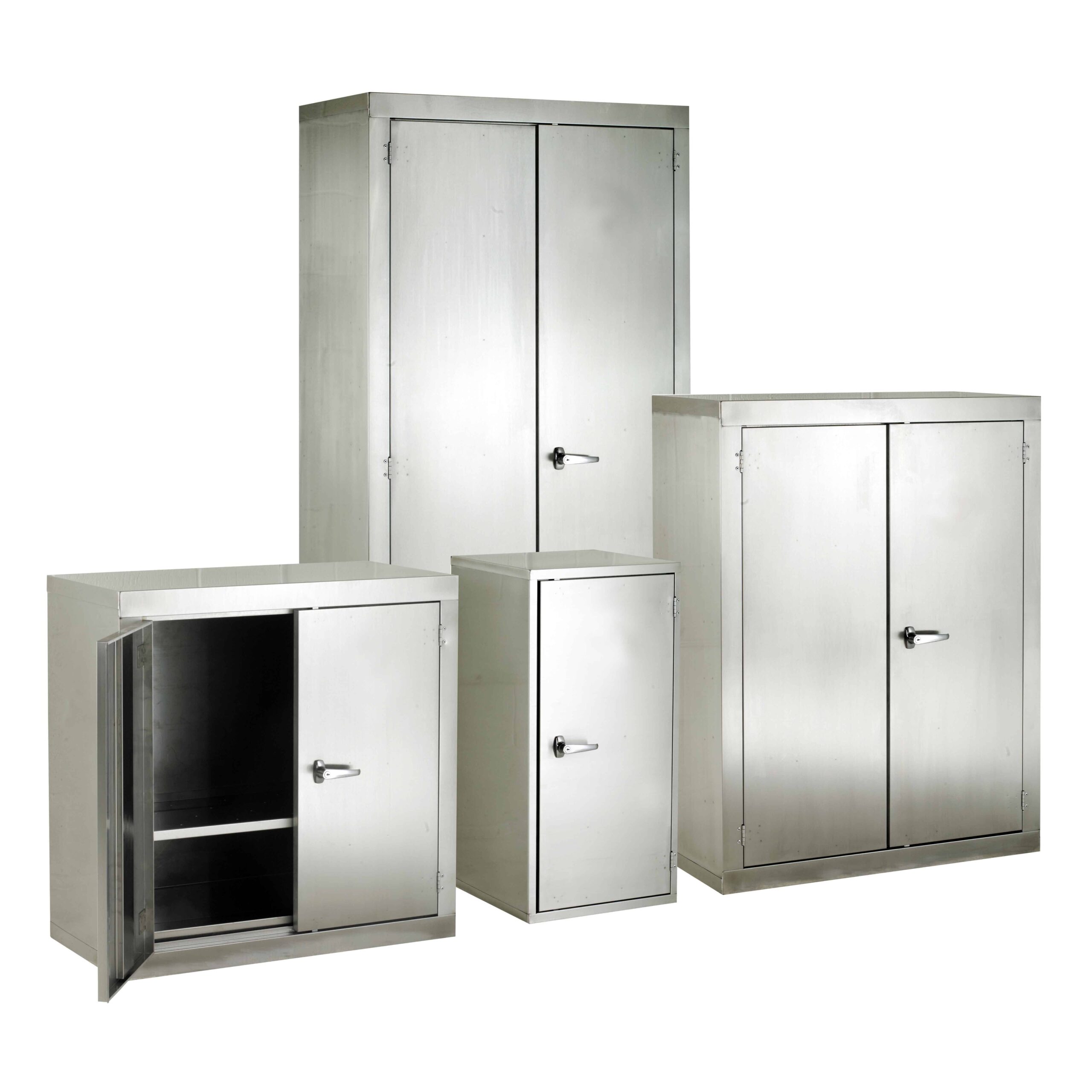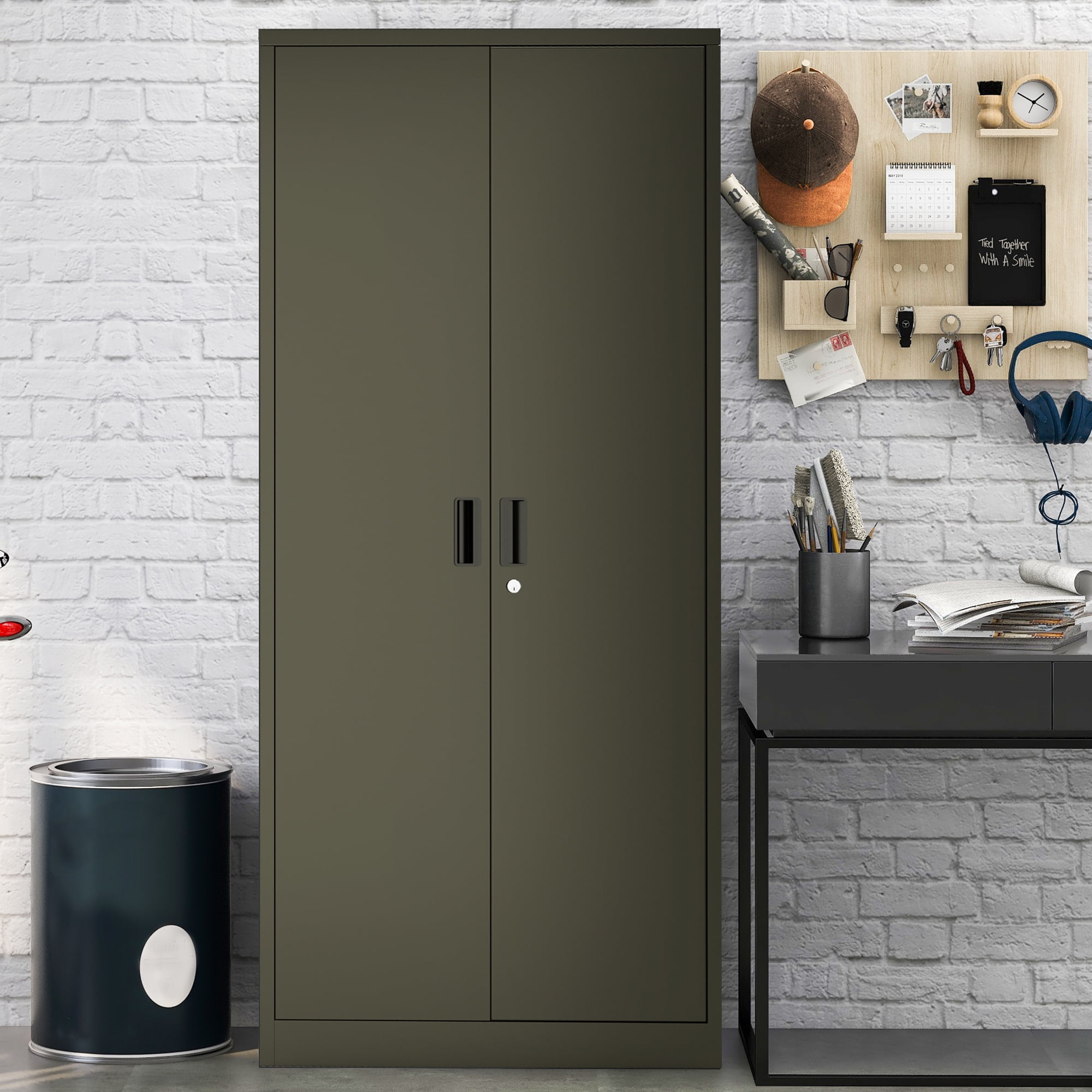Types of Metal Storage Cabinet Parts

Metal storage cabinets are an essential part of any workspace, offering secure and organized storage for various items. These cabinets are constructed from various metal parts, each serving a specific purpose and contributing to the overall functionality and durability of the cabinet. This section delves into the common types of metal storage cabinet parts, exploring the materials used and their advantages and disadvantages.
Types of Metal Storage Cabinet Parts
Metal storage cabinets consist of several key components that work together to create a functional and durable storage solution. These parts include:
- Doors: Doors provide access to the cabinet’s interior and are typically made of sheet metal, often steel or aluminum. Steel doors are robust and offer excellent security, while aluminum doors are lighter and more corrosion-resistant.
- Drawers: Drawers offer organized storage for smaller items and are usually made of sheet metal, with steel being the most common material due to its strength and durability. Some drawers may feature specialized coatings or linings to protect sensitive items.
- Shelves: Shelves provide horizontal storage space within the cabinet and are typically made of sheet metal, often steel or aluminum. Steel shelves offer greater load capacity, while aluminum shelves are lighter and more corrosion-resistant.
- Locks: Locks secure the cabinet and prevent unauthorized access. Common lock types include key locks, combination locks, and electronic locks. The choice of lock depends on the security requirements of the specific application.
- Hinges: Hinges connect the doors to the cabinet frame, allowing for smooth and reliable opening and closing. Hinges are typically made of steel or brass, with steel offering greater strength and durability.
- Handles: Handles provide a grip for opening and closing doors and drawers. Handles are available in various materials, including steel, aluminum, and plastic. The choice of handle material depends on the overall aesthetic and functionality of the cabinet.
- Frame: The frame provides structural support for the cabinet and is typically made of heavy-gauge steel, ensuring durability and stability.
- Back Panel: The back panel encloses the cabinet and is typically made of sheet metal, often steel or aluminum. The choice of material depends on the overall design and functionality of the cabinet.
- Base: The base supports the cabinet and is usually made of heavy-gauge steel, providing stability and strength. Some bases may feature adjustable feet for leveling the cabinet on uneven surfaces.
Materials Used for Metal Storage Cabinet Parts
The choice of material for metal storage cabinet parts is crucial, as it directly impacts the durability, aesthetics, and cost of the cabinet. Common materials used include:
- Steel: Steel is a strong and durable material commonly used for metal storage cabinet parts. It offers excellent load capacity and resistance to wear and tear. However, steel is susceptible to rust and corrosion, especially in humid environments. To mitigate this, steel parts are often coated with protective finishes like powder coating or galvanizing.
- Aluminum: Aluminum is a lightweight and corrosion-resistant material, making it suitable for parts requiring resistance to moisture and harsh environments. Aluminum is also relatively easy to shape and form, allowing for intricate designs. However, aluminum is less strong than steel and may not be suitable for high-load applications.
- Stainless Steel: Stainless steel is a highly corrosion-resistant material known for its durability and aesthetic appeal. It is often used for high-end cabinets or applications requiring resistance to harsh chemicals or environments. However, stainless steel is more expensive than other materials.
Advantages and Disadvantages of Different Metals
| Material | Advantages | Disadvantages |
|---|---|---|
| Steel | High strength and durability, good load capacity, cost-effective | Susceptible to rust and corrosion, heavier than aluminum |
| Aluminum | Lightweight, corrosion-resistant, easy to shape and form | Lower strength than steel, may not be suitable for high-load applications |
| Stainless Steel | Highly corrosion-resistant, durable, aesthetically pleasing | More expensive than other materials |
Metal Storage Cabinet Part Functions

Metal storage cabinets are essential for organizing and protecting valuable items in various settings, from homes and offices to industrial facilities. The functionality of a metal storage cabinet relies on the interplay of its individual parts, each designed to contribute to the overall structure, security, and usability of the cabinet.
Types of Locking Mechanisms
Locking mechanisms are crucial for safeguarding the contents of a metal storage cabinet. They come in a variety of designs, each offering different levels of security.
- Keyed Locks: These are the most common type of locking mechanism, relying on a physical key to open the cabinet. Keyed locks can range in complexity, from basic wafer locks to more sophisticated pin tumbler locks.
- Combination Locks: Combination locks require users to enter a specific sequence of numbers to unlock the cabinet. These locks offer a higher level of security than keyed locks, as they eliminate the need for a physical key, which can be lost or stolen.
- Electronic Locks: Electronic locks utilize electronic components and digital codes to open the cabinet. They offer the highest level of security, as they are difficult to bypass and can be programmed with multiple access levels.
Cabinet Door Functionalities
Cabinet doors play a vital role in providing access to the contents of the cabinet and protecting them from the elements. Different types of cabinet doors offer varying levels of functionality and security.
| Door Type | Functionality | Security |
|---|---|---|
| Sliding Doors | Slide horizontally along tracks, offering space-saving access. | Moderate security, as they can be easily forced open if not properly secured. |
| Hinged Doors | Swing open on hinges, providing full access to the cabinet’s interior. | High security, as they can be reinforced with strong hinges and locks. |
| Roll-up Doors | Roll up and down vertically, offering a large opening for bulky items. | Moderate security, as they can be easily forced open if not properly secured. |
Metal Storage Cabinet Part Selection Considerations: Metal Storage Cabinet Parts

Selecting the right metal storage cabinet parts is crucial for ensuring the functionality, durability, and aesthetic appeal of your storage solution. The process requires careful consideration of various factors, including the intended use, available space, and budget.
Factors to Consider When Selecting Metal Storage Cabinet Parts
The selection process involves considering several key factors that influence the overall effectiveness and longevity of the storage solution.
- Size: Determine the appropriate dimensions of the cabinet to accommodate the items you intend to store. Consider the height, width, and depth required for efficient organization and accessibility. A well-planned cabinet size ensures optimal utilization of space and avoids overcrowding or wasted space.
- Weight Capacity: Assess the weight of the items to be stored and select cabinet parts with a sufficient weight capacity. Heavy-duty storage requires robust materials and reinforced construction to withstand the load. Conversely, lightweight storage solutions may suffice for lighter items. Choosing the right weight capacity prevents structural failure and ensures the safety of stored goods.
- Durability: Opt for materials known for their strength and resistance to wear and tear. High-quality metal, such as steel or aluminum, provides excellent durability and longevity. Consider the type of finish, such as powder coating or galvanizing, to enhance corrosion resistance and extend the lifespan of the cabinet.
- Aesthetics: Consider the aesthetic appeal of the cabinet, especially if it will be visible in a workspace or public area. Choose colors and finishes that complement the existing environment. A well-designed cabinet can enhance the overall visual appeal of the space.
- Cost: Budget plays a crucial role in selecting metal storage cabinet parts. Compare prices from different manufacturers and consider the long-term value of the investment. A higher upfront cost may be justified if the cabinet offers superior durability, functionality, and aesthetic appeal, leading to cost savings in the long run.
Choosing Parts for Specific Storage Needs
The selection of metal storage cabinet parts should align with the specific storage requirements.
- Heavy-Duty Storage: For heavy-duty applications, prioritize cabinet parts made of robust materials like thick steel or aluminum with reinforced construction. Consider features like adjustable shelves, heavy-duty casters, and secure locking mechanisms to accommodate the weight and secure valuable items.
- Sensitive Document Storage: When storing sensitive documents, prioritize fire-resistant cabinets with features like locking drawers and secure access control. Consider cabinets with fire-rated doors and shelves for additional protection. Ensure the cabinet is compliant with relevant industry standards and regulations.
- Specialized Equipment Storage: For specialized equipment storage, select cabinets with adjustable shelves, dividers, and drawers to accommodate the unique dimensions and requirements of the equipment. Consider cabinets with integrated power outlets and ventilation for specific needs.
Essential Questions to Ask When Selecting Metal Storage Cabinet Parts
Before making a purchase, consider the following questions:
- What is the intended use of the cabinet? Determine the specific storage needs and the types of items to be stored.
- What is the available space for the cabinet? Measure the available space to ensure the chosen cabinet fits comfortably and provides sufficient storage capacity.
- What is the weight capacity required for the cabinet? Estimate the weight of the items to be stored and select a cabinet with a sufficient weight capacity.
- What are the desired aesthetic features for the cabinet? Consider the overall look and feel of the cabinet and its compatibility with the surrounding environment.
- What is the budget allocated for the cabinet? Set a realistic budget and compare prices from different manufacturers to find the best value for your investment.
Metal storage cabinet parts – Ngomongin soal part-part lemari penyimpanan metal, inget dong sama baut-bautnya? Nah, kalau lagi pusing mikirin desain ruang tamu yang makin kece, coba deh lirik lcd tv lift cabinet yang bisa bikin TV-mu naik turun kayak pesulap! Eh, tapi balik lagi ke lemari penyimpanan metal, jangan lupa cek juga engselnya ya, biar pintunya gak ngeloyor.
Hehehe.
Ngomongin soal metal storage cabinet parts, inget dong sama lemari besi di rumah. Nah, kalo di ruang tamu, bisa juga nih pasang lemari TV model gantung. Yang kayunya elegan, bikin ruang tamu makin kece! Floating TV cabinet wood ini keren abis, mirip kaya lemari besi yang kuat, tapi desainnya lebih modern.
Gak kalah sama metal storage cabinet parts, bisa buat naro barang-barang penting, tapi tetap estetis!